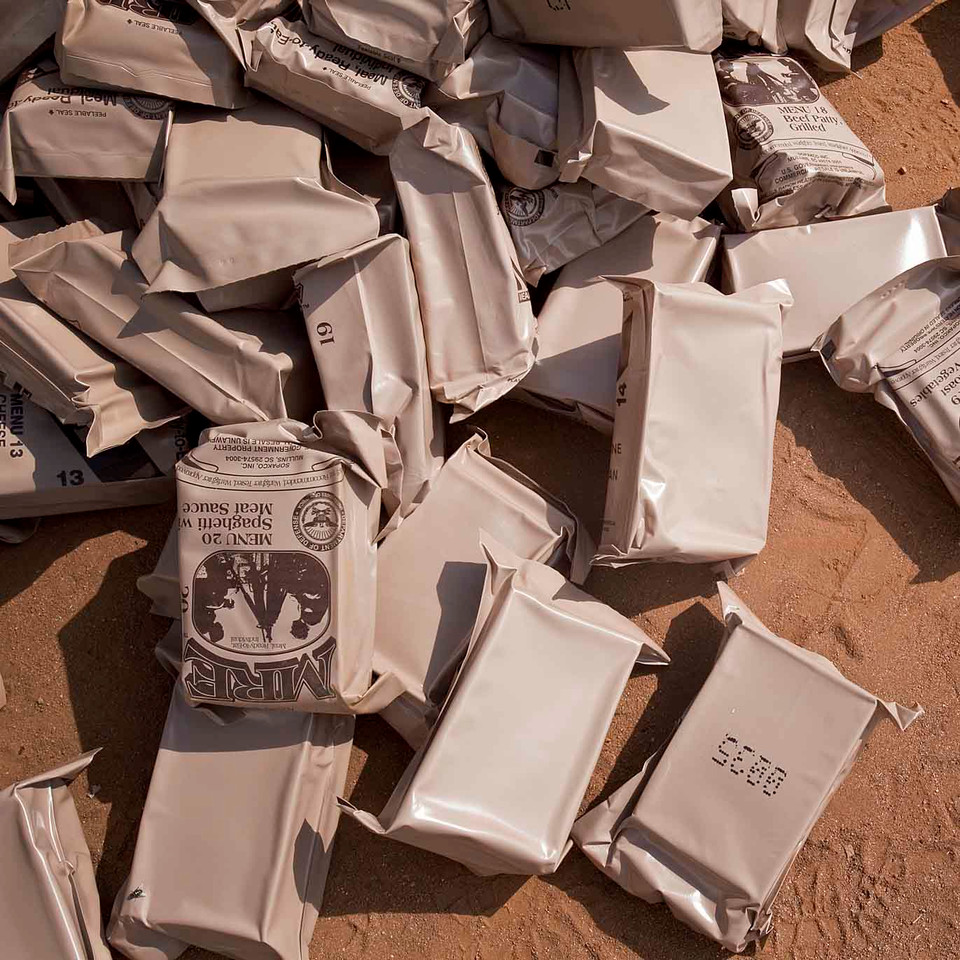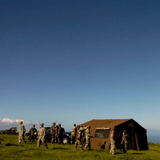How Long Do Military MREs Really Last?
How Long Do Military MREs Really Last?
Meals, Ready to Eat (MREs) are incredibly popular disaster preparedness foods because they don’t require any cooking, are shelf stable, and are cheaper than traditional emergency meals. Before you rush out and buy a huge case of MREs, though, it’s important that you understand MRE shelf life, how to determine MRE expiration date, and know whether it’s safe to eat old MREs.
MRE Shelf Life
Meals, Ready to Eat (MREs) are guaranteed to maintain a “high quality” for a shelf life of 3 years at 80°F, or for 6 months at 100°F. You’ll notice that temperature makes a big difference to the MRE shelf life: the cooler the storage temperature, the longer an MRE will last. Stored at 60°F, an MRE can last over 7 years.
How to Tell When an MRE Was Made
You can usually find the manufacturing date stamped on the MRE box and pouch. It is a 4-digit code based on the Julian Date format.
The Julian Date format is Y-DDD. The Y represents the last number of the year. The DDD represents the day of the year (from 1 to 366). For example, January 1st, 2020 would be written as 0-001. December 31st, 2021 would be written 1-365. Only the last digit of the year is used because MREs typically don’t last longer than 10 years.
You might sometimes see additional numbers after the Julian Date code on an MRE. These are usually for batch numbers or other manufacturing info. They are not part of the manufacturing date.
How to Tell if an MRE Is Expired
Going by manufacturing date and temperature to determine if an MRE shelf is expired has flaws. For starters, there is no way for you to know for certain what temperature the MREs were at during warehouse storage and shipping. If the MRE is more than 10 years old, the Julian Date code will also be useless. For example, the MRE shown above could have been made in 2007 instead of 2017.
For this reason, the US Military introduced Time Temperature Indicators (TTIs) on MREs in 1997. The TTI looks like an orange circle and you can find it on the MRE packaging. The TTI will show you which “stage” the MRE is at, and you can use the stage to accurately determine remaining shelf life or if the MRE is already expired.
TTI Stages:
- 0: Center is much lighter than outer ring
- 1: Center lighter than outer ring
- 2: Center slightly lighter than outer ring
- 3: Center same shade as outer ring
- 4: Center slightly darker than outer ring
- 5: Center much darker than outer ring
Remaining Shelf Life (in Months), by TTI Stage and Storage Temperature
Once you know the TTI stage, you can figure out exactly how long the MRE will last, or if it already exceeded its expiration date. The table below shows how many months the MRE has before expiring when stored at 60F, 80F, or 100F.
| TTI Stage | At 60°F | At 80°F | At 100°F |
| 0 | 210 | 36 | 6.4 |
| 1 | 146 | 24 | 4.5 |
| 2 | 106 | 17 | 3.2 |
| 3 | 0 | 0 | 0 |
| 4 | Exceeded | Exceeded | Exceeded |
| 5 | Exceeded | Exceeded | Exceeded |
Can You Freeze MREs?
Because cold temperatures make MREs last longer, you might want to freeze an MRE. However, freezing MREs is a bad idea.
MRE meals are wet, so the contents will expand when frozen and can break the seal. Once the seal on an MRE is broken, it will go bad very quickly at room temperature. Freezing also causes the MRE package to become brittle, making it more likely to rip or crack.
Is It Safe to Eat Expired MREs?
The internet is filled with videos of people eating military MREs that are 20 or even 30 years old. They are all still alive, and didn’t even report any stomach issues the next (except for the usual constipation that sometimes comes with MREs!).
How is it possible to eat a 20 year old MRE?
It is because expiration date does not indicate when a food goes bad. Rather, expiration date indicates when a food will lose quality, such as changing texture or taste.
So long as the MRE package is still sealed, there is no way for pathogens that cause food-borne illness, such as listeria or salmonella, to enter the MRE. The MRE should remain safe to eat. However, MREs will definitely lose their quality over time.
See the below images to see how much MRE applesauce and cheese spread changes at high temperatures. You probably wouldn’t want to eat that unless it was a true SHTF situation!
For this reason, make sure you buy your MREs from a reputable source. Avoid buying MREs from unknown sellers and on eBay because they might be old or have been stored improperly. And, like with all emergency foods, remember to rotate your stockpile regularly. Army Navy Outdoors is a reliable retailer of MREs. See our MRE and emergency food selection here.







